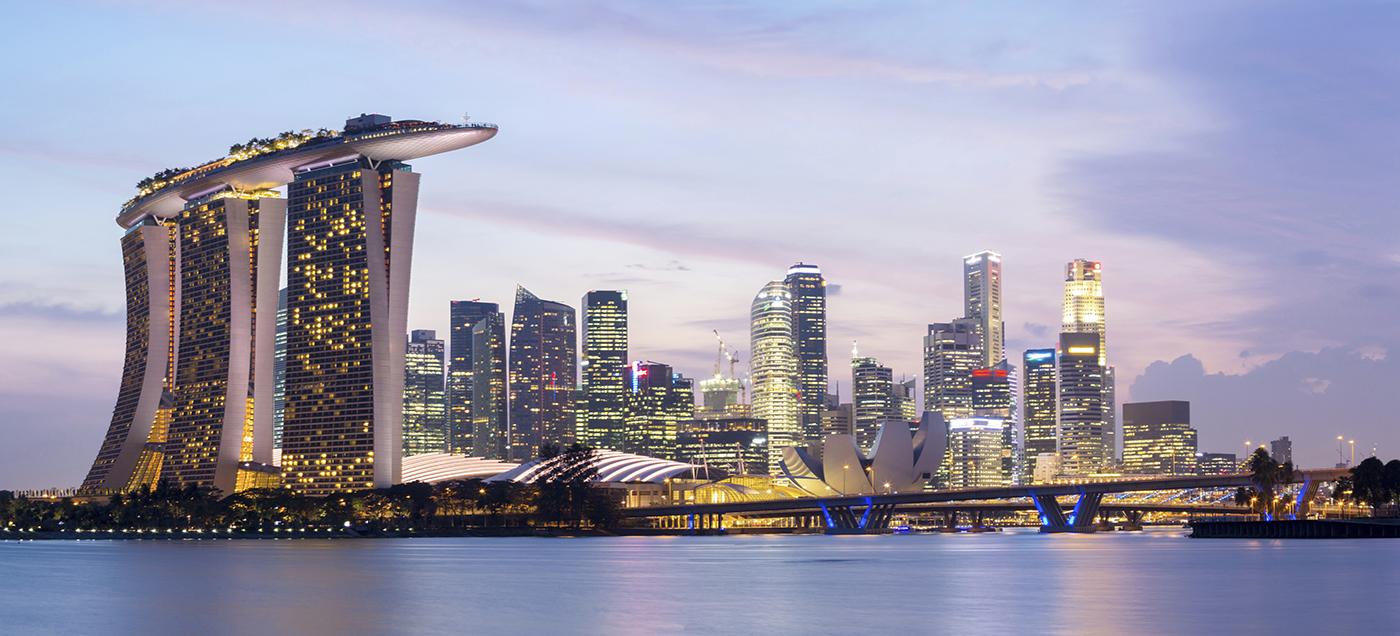The WPJ
THE WORLD PROPERTY JOURNALReal Estate Facts Not Fiction
Residential Real Estate News

Singapore Enjoyed Improving Residential Sales in Q3, Despite COVID
Residential News » Singapore Edition | By Michael Gerrity | January 22, 2021 8:18 AM ET
Accommodative credit, improving sentiment lifted private homes activity in third quarter
International property broker EDMUND TIE is reporting that with signs of progressive economic recovery in play for Singapore, private home activity continued on an upward trend for five consecutive months to reach 1,329 units transacted in September 2020.
Following the reopening of the economy and the resumption of show flat viewings in June 2020, pent-up demand arising from the circuit breaker drove sales in Q3, which more than doubled from Q2's 2,664 units to hit 7,048 units, which was 22.3% higher year on-year (yoy).
Ms. Ong Choon Fah, chief executive officer of EDMUND TIE commented, "Amid a low interest rate environment, coupled with volatility in equity and other asset classes, real estate presents itself as a choice option for investors seeking a stable store of wealth with the potential to appreciate over the long term.
"Confidence in the market after the past few months of price recovery and sales would have also have played a role in encouraging demand from homebuyers, including HDB upgraders."
According to the URA All Residential Property Price Index (PPI), overall private home prices rose for the second consecutive quarter by a larger 0.8% quarter-on-quarter (qoq) in Q3 2020, after 0.3% in Q2 2020.
Mr. Lam Chern Woon, EDMUND TIE's senior director of research and consulting added, "With the low cost of credit and improving sentiment, homebuyers' demand in the third quarter was forthcoming but buyers remained price-sensitive, resulting in robust market demand for projects with attractive pricing and good locational and site attributes."
In the Rest of Central Region (RCR), where the number of launched units more than tripled from 704 units in Q2 2020 to 2,348 units in Q3 2020, new sales likewise tripled to 1,843 units, up from 658 units in the second quarter.
Projects that enjoyed high sell-through rates included Penrose, which saw some 60% of units sold over its launch weekend in September, while another development, NoMa, had 36 of its 50 units sold. Homebuyers and investors were largely interested in the smaller units which had more affordable price tags - most of the units sold in Penrose, for example, were the smaller 1- and 2-bedroom units, with price quantums mostly below $1m.
 As many travel restrictions remained in force - limiting both incoming and outgoing travel - purchases by Singaporeans accounted for the bulk of the non-landed residential sales, making up 80% of total transactions for the quarter. The proportion of foreign purchases (excluding permanent residents), on the other hand, declined further for the third consecutive quarter to 4% in Q3 2020.
As many travel restrictions remained in force - limiting both incoming and outgoing travel - purchases by Singaporeans accounted for the bulk of the non-landed residential sales, making up 80% of total transactions for the quarter. The proportion of foreign purchases (excluding permanent residents), on the other hand, declined further for the third consecutive quarter to 4% in Q3 2020.However, in terms of absolute volume, purchasers of all residential status surged, owing to the pent-up demand and growing confidence in the market. For example, mainland Chinese buyers, who made up the bulk of non-landed purchasers in Q3 2020 at 21%, purchased 252 units, which was almost double of the 133 units in the preceding quarter. Likewise, purchases made by Malaysians more than doubled from 59 units in Q2 2020 to 137 units.
Purchases by Singaporeans also expanded significantly, more than doubling from 1,918 units in Q2 2020 to 4,919 units in Q3 2020, while transaction volume by
permanent residents grew the most, almost tripling from 353 units in Q2 2020 to 947 units in Q3 2020.
Also riding on the improving property climate was the resale market, which enjoyed better profitability after an unprecedented economic downturn in Q2 2020. The proportion of loss-making transactions declined to 15.9% in October 2020 from 17.0% in September 2020, excluding the effects of transaction or financing costs. During the months of April to July 2020, which covered the Circuit Breaker and its aftermath, the proportion of loss-making transactions ranged from 17.7% to 21.9%.
Mr. Lam said: "The improving figures suggest that the volume of distressed sales may be contained in the near term, but this is a situation that needs to be closely monitored as the temporary Covid-19 policy stimulus and support measures gradually unwind over the course of next year."
"While the present situation appears relatively benign, we need to be mindful that things could evolve quickly and the profitability of the purchase will only be determined upon future sale," commented Ms Ong.
While the residential market as whole gathered momentum till September, transaction volumes however dipped in October, as the market reacted to the new regulatory policy clamping down on the re-issuance of options-to-purchase (OTPs).
Mr. Lam further commented, "Notwithstanding the market's reaction to the new OTP policy, we anticipate that the impact will moderate as homebuyers better manage their finances and adjust to the new regulation. In the meantime, new sales are still expected to be supported by genuine demand from homebuyers who are in relatively better financial positions."
"Additionally, given limited travel opportunities and with developers maintaining their launch momentum, we expect demand from local homebuyers to support residential activity in November and December," he added.
Sign Up Free | The WPJ Weekly Newsletter
Relevant real estate news.
Actionable market intelligence.
Right to your inbox every week.
Real Estate Listings Showcase
Related News Stories
Residential Real Estate Headlines
- Las Vegas Area Home Prices Uptick 4.3 Percent Annually in March
- Single-Family Rent Growth in U.S. Trends Upward in 2025
- U.S. Mortgage Rates Tick Down Post Trump Tariffs Commencement
- President Trump's 'Liberation Day' Tariffs Potential Impact on the U.S. Housing and Mortgage Markets
- Baby Boomers Biggest Cohort of U.S. Home Buyers in 2025 as Millennials Decline
- U.S. Monthly Housing Payments Hit Record High in 2025
- U.S. Pending Home Sales Uptick in February
- Global Prime Residential Rent Slowdown Continued in Late 2024
- Ireland Home Price Inflation Hits 8 Year High in Early 2025
- Existing Home Sales in America Uptick in February
- Great Miami Area Residential Sales Decline 15 Percent Annually in February
- Mortgage Rates Uptick in Mid-March, Ending 9-Week Decline in U.S.
- World Property Ventures Builds the Future of Real Estate with New Funding Round
- U.S. Builder Sentiment Declines Amid Economic Uncertainty and Rising Costs
- Black Homeownership Rates in U.S. Enjoy Largest Annual Increase of All Racial Groups
- Wealthy Renters Are Taking Over More of the U.S. Rental Market
- If U.S. Congress Does Not Extend NFIP Soon, Thousands of Daily Home Closings Impacted
- U.S. Mortgage Applications Spike 11 Percent in Early March
- Greater Palm Beach Area Residential Sales Rise in Early 2025
- New Apartments in U.S. Are Leasing at Slowest Pace on Record
- U.S. Mortgage Rates Drop to 4 Month Low in March
- Overall U.S. Mortgage Delinquency Rates Dip in December
- New Tariffs on Canada, Mexico to Impact U.S. Homebuilder Input Costs
- Monaco's Property Market: A Tale of Two Cities
- U.S. Home Purchase Cancellations Surge, 1 in 7 Sales Getting Canceled
- U.S. Pending Home Sales Hit Historic Low in Early 2025
- Greater Miami Area Residential Sales Dip in January
- Governor DeSantis Supports Ending Property Taxes in Florida
- WPV Aims to Become the Berkshire Hathaway of Real Estate Tech
- U.S. Home Sales Slump Continues in January
- Average Americans Spend 38 Percent of Monthly Income on Mortgage Payments
- Switzerland's Safe-Haven Appeal Grows with World's Wealthy Homebuyers
- U.S. Builder Confidence Rapidly Declines in February
- Las Vegas Home Sales Rise 6.7 Percent Annually in January, Condo Sales Dip
- Homebuyer Demand in America Drops to 5-Year Low in Early 2025
- Ownership More Affordable Than Renting in Most U.S. Markets
- The World's First Global Listings Service Launches, Called a GLS
- Home Prices Continue to Rise in 89 Percent of U.S. Metros in Late 2024
- Global Luxury Residential Prices Showed Gradual Improvement in Late 2024
- U.S. Construction Hiring Rate Drops to Lowest Levels in 5 Years
Reader Poll
Marketplace Links
This website uses cookies to improve user experience. By using our website you consent in accordance with our Cookie Policy. Read More





